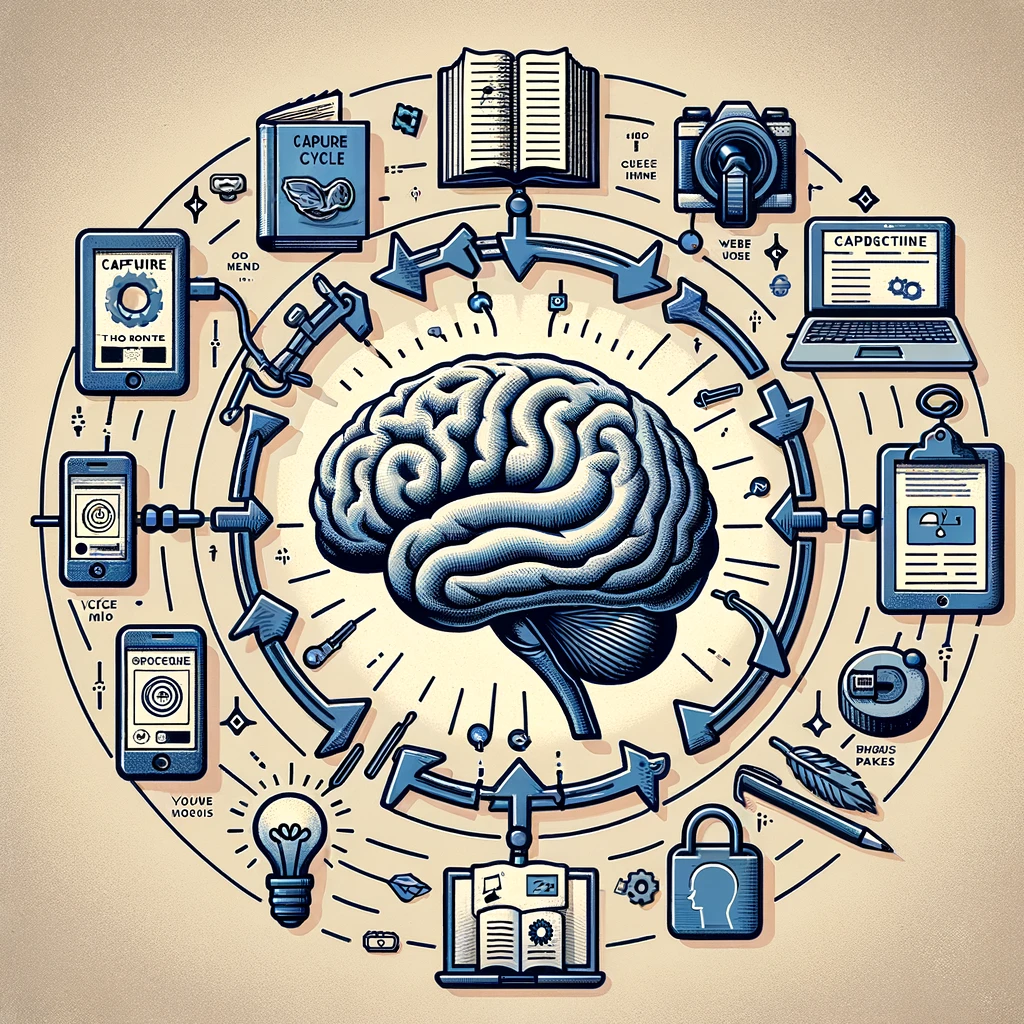Managing Projects with a Second Brain: Advanced Tips
In the fast-paced and information-dense world we live in, managing projects effectively is crucial for success. The concept of a “Second Brain,” popularized by productivity expert Tiago Forte, offers a robust framework for organizing and managing information. This article delves into advanced tips for leveraging a Second Brain to enhance your project management skills.

Understanding the Second Brain Concept
The Second Brain concept revolves around creating an external system that captures, organizes, and retrieves information, freeing your mind for creative and critical thinking. This system is typically digital, using tools like Evernote, Notion, or Roam Research. The goal is to build a reliable repository of knowledge and tasks that supports your personal and professional projects.
Tip 1: Implement PARA Framework for Project Management
The PARA framework, developed by Tiago Forte, is a cornerstone of the Second Brain methodology. It stands for Projects, Areas, Resources, and Archives. Here’s how you can implement it effectively for project management:
- Projects: Active efforts with a specific goal and deadline. Break down your projects into actionable tasks and track progress regularly.
- Areas: Long-term responsibilities and interests. Maintain a clear separation between ongoing maintenance tasks and project-specific tasks.
- Resources: Reference materials and information supporting your projects and areas. Organize resources by relevance and usage frequency.
- Archives: Completed projects and inactive resources. Regularly review and archive items to keep your system uncluttered.
By categorizing your information within this framework, you ensure that everything has its place, making retrieval and organization seamless.
Tip 2: Master the Art of Progressive Summarization
Progressive summarization is a technique to highlight and condense information over time. This method is particularly useful for managing large volumes of data and ensuring that critical insights are easily accessible. Here’s how to apply it:
- First Pass: Capture information verbatim, focusing on completeness.
- Second Pass: Highlight key points, important quotes, and main ideas.
- Third Pass: Create concise summaries or annotations of the highlighted text.
- Fourth Pass: Synthesize insights into a coherent summary or actionable tasks.
By progressively summarizing your notes, you transform raw data into valuable knowledge, making it easier to reference and apply when managing projects.
Tip 3: Leverage Tags and Links for Contextual Organization
Tags and links are powerful tools for creating contextual relationships between pieces of information. This method enhances the navigability and interconnectedness of your Second Brain. Here are some strategies:
- Tagging: Use tags to categorize notes by themes, topics, or project phases. Be consistent with your tagging system to ensure reliability.
- Linking: Create links between related notes, projects, and resources. This helps build a web of knowledge that mirrors your thought process and workflow.
- Backlinks: Use backlinks to create a bidirectional connection between notes. This feature, available in tools like Roam Research, enables a dynamic and interconnected system.
By effectively using tags and links, you create a rich, navigable network of information that supports your project management needs.
Tip 4: Develop a Weekly Review Routine
A weekly review is essential for maintaining and optimizing your Second Brain. This routine involves reviewing and organizing your notes, tasks, and projects to ensure alignment with your goals. Here’s a suggested structure:
- Inbox Processing: Review and organize any new information captured during the week. Categorize items into Projects, Areas, Resources, or Archives.
- Project Review: Assess the progress of ongoing projects. Update tasks, set priorities, and adjust timelines as needed.
- Area Maintenance: Ensure long-term responsibilities are on track. Identify any necessary adjustments or new initiatives.
- Resource Management: Curate and update your resources. Archive outdated or irrelevant materials.
- Reflection and Planning: Reflect on the past week’s accomplishments and challenges. Plan for the upcoming week by setting clear goals and priorities.
Consistent weekly reviews keep your Second Brain organized and aligned with your project management objectives.
Tip 5: Utilize Templates for Consistency and Efficiency
Templates are invaluable for maintaining consistency and efficiency in your Second Brain. They standardize processes and ensure you capture all necessary information. Here are some useful templates:
- Project Template: Include sections for objectives, milestones, tasks, resources, and deadlines.
- Meeting Notes Template: Structure for capturing agendas, key points, decisions, and action items.
- Research Notes Template: Sections for summarizing articles, key takeaways, and related links.
- Weekly Review Template: Checklist for processing your inbox, reviewing projects, and planning the upcoming week.
By using templates, you streamline your workflow and ensure comprehensive information capture.
Tip 6: Embrace Automation for Routine Tasks
Automation can significantly enhance the efficiency of your Second Brain. Tools like Zapier, IFTTT, and built-in automation features in your note-taking app can automate routine tasks such as:
- Task Creation: Automatically create tasks from emails, messages, or calendar events.
- Note Organization: Automatically categorize and tag new notes based on predefined criteria.
- Data Syncing: Ensure your notes, tasks, and projects are synchronized across all your devices and applications.
Automation reduces manual effort and minimizes the risk of oversight, allowing you to focus on higher-value tasks.
Tip 7: Share and Collaborate with Your Second Brain
A Second Brain is not only a personal tool but can also be a collaborative resource. Sharing and collaborating with team members enhances collective knowledge and project management efficiency. Here’s how to do it:
- Shared Workspaces: Use shared notebooks or workspaces for team projects. Ensure everyone has access to relevant information and can contribute.
- Real-Time Collaboration: Utilize features that allow real-time editing and collaboration on notes and documents.
- Feedback and Comments: Encourage team members to provide feedback and comments on shared notes, fostering a collaborative environment.
By leveraging your Second Brain for collaboration, you enhance team productivity and project outcomes.
Conclusion
Managing projects with a Second Brain offers a structured, efficient, and flexible approach to handling information and tasks. By implementing advanced tips like the PARA framework, progressive summarization, and automation, you can elevate your project management skills. Regular reviews, effective use of tags and links, and embracing collaboration further optimize your Second Brain, ensuring it supports your personal and professional success. Start building and refining your Second Brain today to experience the transformative impact on your project management capabilities.



